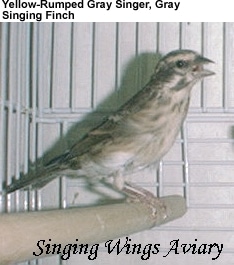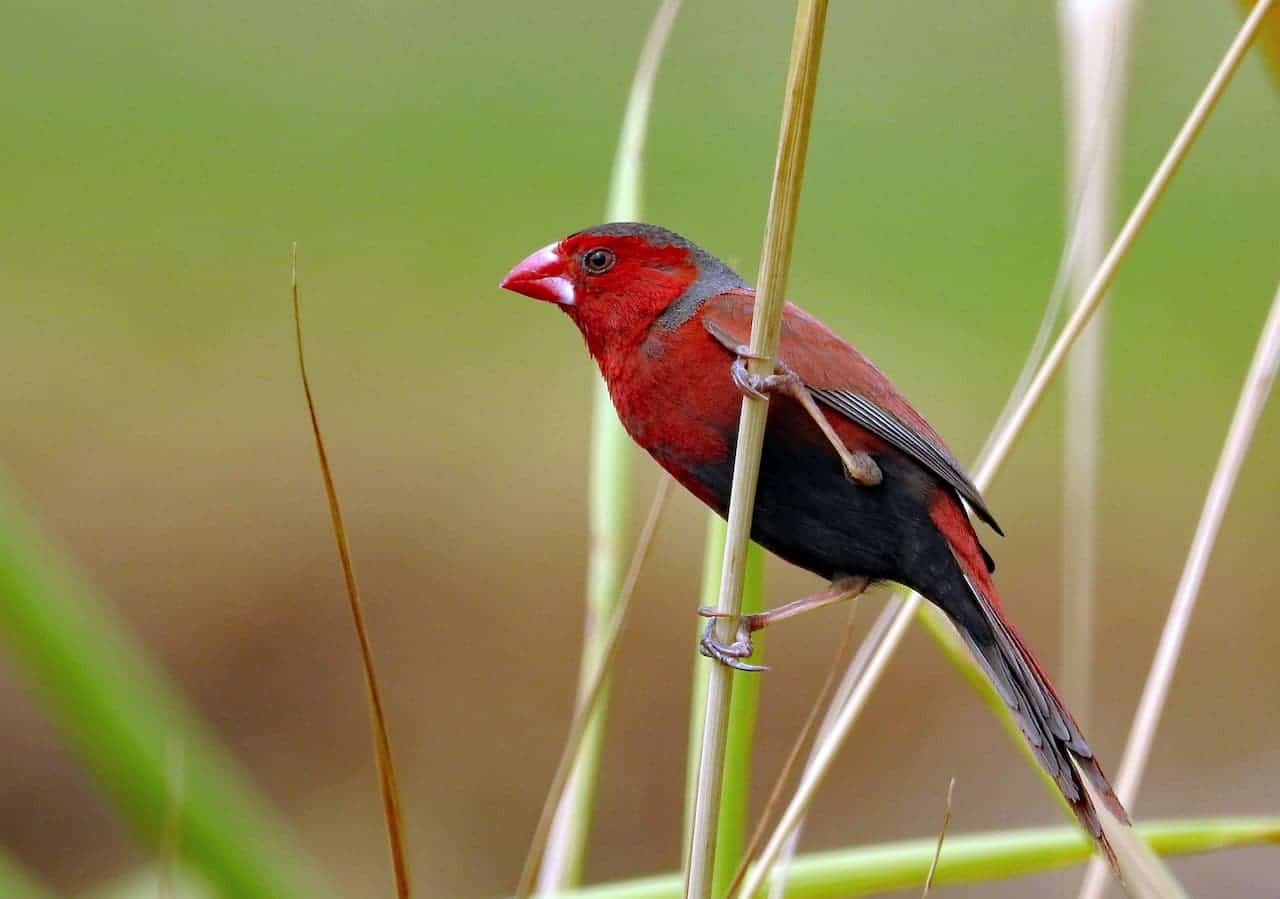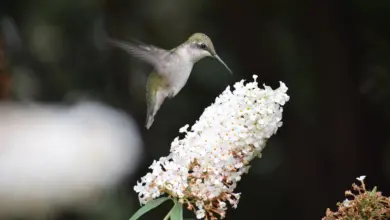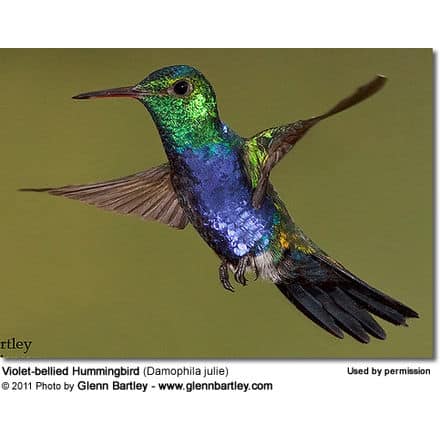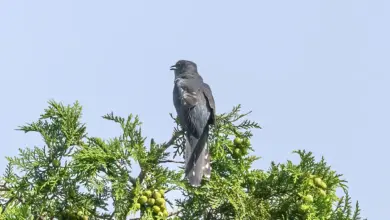Grey Singing Finch
Grey Singing Finch (Serinus leucopygius) or Yellow-Rumped Gray Singers are a drab gray color with cream streaking throughout the body plumage. The eyes are dark, the beak grey and the legs are pale pink.
Photo and information courtesy of Mandy and Paul – Breeder of Canaries and Other Exotic Birds – Singing Wings Aviary – www.singing-wings-aviary.com (A great source for these beautiful little finches)
Description:
Gray Singers (Serinus leucopygius) is a drab gray color with cream streaking throughout the body plumage. The eyes are dark, the beak grey and the legs are pale pink.
Both sexes look identical and can prove hard to sex. Hens can at times be sexed from necklace-type beading when in breeding condition but this is not always the case.
Size:
This species typically averages 4 inches or 10 cm in length (including tail).
Origin:
The Gray Singer originated in Northern Africa.
Diet:
A good Gray Singer diet must include a mixture of millets, canary grass seeds, wild seeds, and green food. These birds are especially fond of Maw and Poppy seeds. They will require more green food and live food when breeding. Ant eggs, small mealworms, waxworms, and fruit fly larvae can be mixed in with soft food and offered on occasion.
Sprouted or germinated seeds are usually more easily accepted by “seed addicts” than fresh fruits and vegetables.
- Sprouted seeds are healthier as the sprouting changes and enhances the nutritional quality and value of seeds and grains. Sprouted seeds are lower in fat, as the process of sprouting utilizes the fat in the seed to start the growing process – thus reducing the fat stored in the seeds.
- Sprouted seeds will help balance your bird’s diet by adding a nutritious supply of high-in vegetable proteins, vitamins, minerals, enzymes, and chlorophyll.
- Soaked and germinated “oil” seeds, like niger and rape seeds, are rich in protein and carbohydrates; while “starch” seeds, such as canary and millets, are rich in carbohydrates, but lower in protein.
- It is an invaluable food at all times; however, it is especially important for breeding or molting birds. Sprouted seeds also serve as a great rearing and weaning food as the softened shell is easier to break by chicks and gets them used to the texture of seeds.
Fresh water, cuttlebone, and grit should also be supplied at all times. Lettuce, Spinach, Chickweed, spray millet, Eggfood, Brocolli tops, and Carrot tops can also be offered regularly.
General Care:
They are generally hardy but can be susceptible to cold climates. Provide fresh water daily.
Compatibility:
This species is best suited for one pair per flight. Though they typically get along with other finches in a mixed aviary males will fight among their species. Also, be careful about placing small waxbills with them.
Housing:
A planted aviary or spacious cage is the best setting for Gray Singers. This environment will entice the male to sing more often than when housed in breeding cages. They will require heating at least to 60-65 degrees during Winter months.
Song:
What the Gray Singer lacks in color he makes up for in song. The males are considered excellent songsters rivaling that of a male Canary, if not better.
Breeding:
These birds prove to breed more often in a planted aviary than in breeding cages. They prefer a Canary-type nest positioned in a high sheltered spot such as the corner of a cage. Artificial plant covering around the nest will provide them with the nest privacy they need.
Nesting material supplied can be dried moss, feathers, or soft Canary nesting material. The average clutch consists of 3-5 eggs which hatch after 14 days. The hen incubates the eggs alone while the male guards the nest.
Hens rarely leaves the nest and males are attentive to feeding her while she sticks to her duties. After the eggs hatch it is important to supply the parents with adequate green food, food, live food, and sprouted seeds.
The young, dark-streaked Gray Singers will fledge around 2 weeks old. The male then assumes feeding responsibilities until the young are weaned. Once weaned young should be removed to prevent fighting between father and male offspring.
Further Finch Reading
- Finch Information
- Index of Finch Species
- Photos of the Different Finch Species for Identification
- Common Health Problems of Finches
- Finch / Canary Diet / Nutrition

